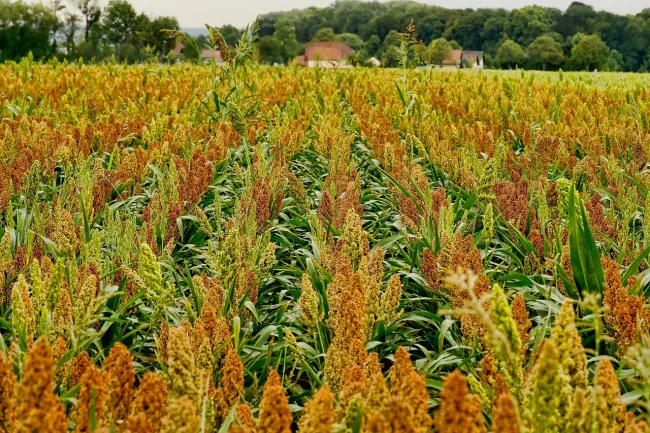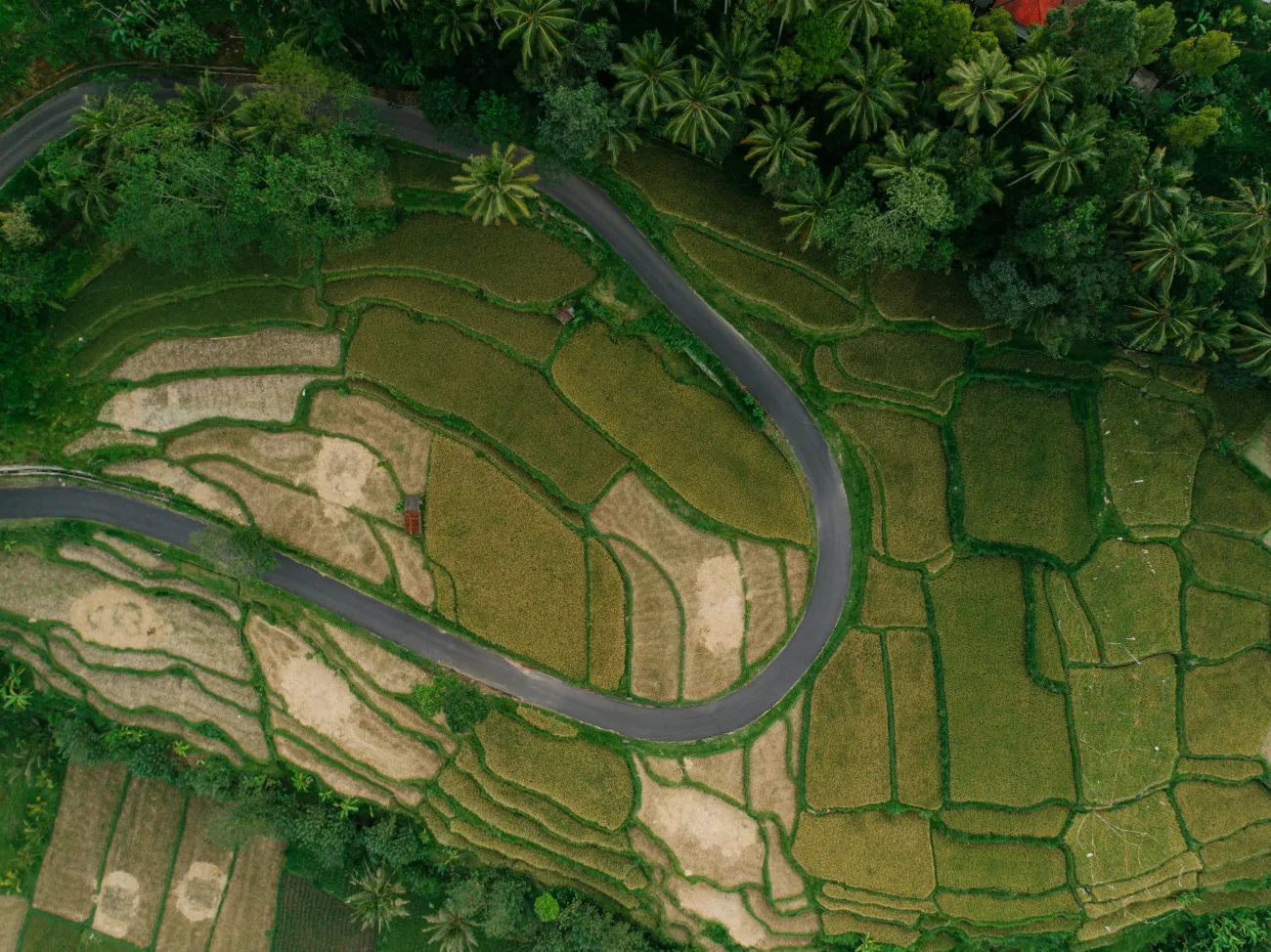Current cropland use could be reduced by 37% to 48%, finds this modelling study of different land-sparing strategies. The paper looks at regional potentials for reducing cropland use and global impacts on crop prices and production levels, finding that more efficient use of land could decrease crop prices and increase global agricultural production by 2.8%. The authors argue that their results can feed into debates about the impacts of afforestation policies - see also the TABLE summary of the paper Land-based climate change mitigation measures can affect agricultural markets and food security.

The study combines two models: a biophysical crop model in which potential yield increases of various crops are calculated at the regional scale, and a model of the world economy which calculates the effects of land saving and yield potentials on crop prices, production volumes and trade flows, both regionally and globally. Maximum yields are assumed to use “perfect crop management conditions” regarding timings of sowing and harvesting, fertiliser use, pest control, and so on.
Three land-sparing strategies are studied:
- Biophysical land saving (BLS): Optimising based on production levels, to reduce cropland area as much as possible. This results in production of each crop being heavily centred around current areas of highest yield for that crop.
- Uniform land saving (ULS): Policy that aims to avoid over-concentration of land sparing in certain geographical areas, for the purpose of reducing social inequalities.
- Socio-economic land saving (SLS): Optimising based on profitability.
The highest global cropland reduction potential - 48% of current area - is found under the BLS scenario, and the lowest - 37% - under the ULS scenario, as shown below. The profit-optimised SLS scenario results in a 45% saving.
Image: Figure 2, Schneider et al. The land saving potential [%] describes the percentage share of cropland that could be taken out of production on the total global cropland area. (a) Global land saving potential for the three different land saving strategies, biophysical land saving (BLS), socio-economic land saving (SLS) and uniform land saving (ULS), further disaggregated into crop categories. (b) Global land saving potential for each crop category as a percentage share of the crop-specific global cropland. For the different crop categories, the following abbreviations are used: cb: sugar cane & sugar beet; gron: rest of cereal grains; mze: maize; osdn: rest of oil seeds; pdr: paddy rice; plm: oil palm; rsd: rapeseed; soy: soy; wht: wheat.
The crop category with the greatest land-saving potential is “rest of cereal grains”, which includes grains such as sorghum and millet that have a large gap between their current and potential yields in their main growing areas (including Sub-Saharan Africa, India, the Middle East and Northern Africa).
Crops that are currently grown intensively and near their potential yields show lower potential land savings, including sugar cane and sugar beet.
The region with the greatest potential land savings is Sub-Saharan Africa (76-83% potential cropland saving), with low potential savings in Japan, the United States and Europe. China has low percentage land saving potential but offers the third-largest absolute cropland saving potential.
Crop outputs increase 2.8% globally under all land-saving strategies, with strong regional variation. The highest regional increases in crop outputs are found in Malaysia and IndonesiaL an increase of nearly 15%, mostly in maize, oil palm and paddy rice, resulting in large price drops for those crops (-34% to -38% for maize, -36% to -27% for oil palm and -49% for paddy rice).
The authors conclude that their findings could help identify suitable areas for land-based climate mitigation. Although their models do not look at the impact of crop price changes on different household types, they suggest that drops in the global prices of staples such as rice, maize and wheat could help poorer households access food. They note that the environmental impacts of agricultural intensification, e.g. groundwater depletion, will depend strongly on exactly how irrigation, fertilisation, tillage etc. are implemented.
Abstract
The pressure on land resources continuously increases not only with the rising demand for agricultural commodities, but also with the growing need for action on global challenges, such as biodiversity loss or climate change, where land plays a crucial role. Land saving as a strategy, where agricultural productivity is increased to allow a reduction of required cropland while sustaining production volumes and meeting demand, could address this trade-off. With our interdisciplinary model-based study, we globally assess regional potentials of land saving and analyse resulting effects on agricultural production, prices and trade. Thereby, different land saving strategies are investigated that (1) minimise required cropland (2) minimise spatial marginalisation induced by land saving and (3) maximise the attainable profit. We find that current cropland requirements could be reduced between 37% and 48%, depending on the applied land saving strategy. The generally more efficient use of land would cause crop prices to fall in all regions, but also trigger an increase in global agricultural production of 2.8%. While largest land saving potentials occur in regions with high yield gaps, the impacts on prices and production are strongest in highly populated regions with already high pressure on land. Global crop prices and trade affect regional impacts of land saving on agricultural markets and can displace effects to spatially distant regions. Our results point out the importance of investigating the potentials and effects of land saving in the context of global markets within an integrative, global framework. The resulting land saving potentials can moreover reframe debates on global potentials for afforestation and carbon sequestration, as well as on how to reconcile agricultural production and biodiversity conservation and thus contribute to approaching central goals of the 21st century, addressed for example in the Sustainable Development Goals, the Paris Agreement or the post-2020 global biodiversity framework.
Reference
Schneider, J.M., Zabel, F., Schünemann, F., Delzeit, R. and Mauser, W., 2022. Global cropland could be almost halved: Assessment of land saving potentials under different strategies and implications for agricultural markets. PloS one, 17(2), p.e0263063.
Read the full paper here. See also the TABLE explainers What is the land sparing-sharing continuum? and What is sustainable intensification?




Comments (0)